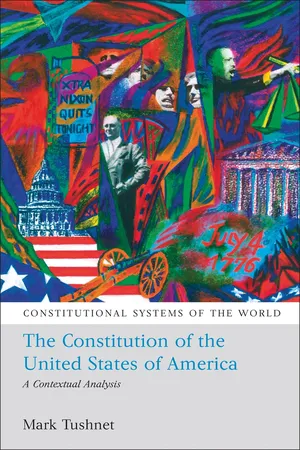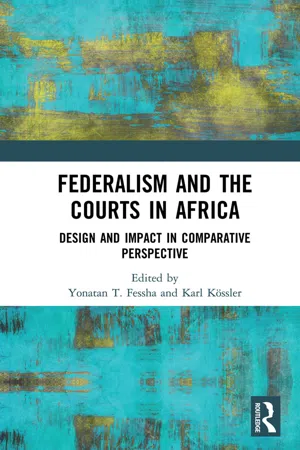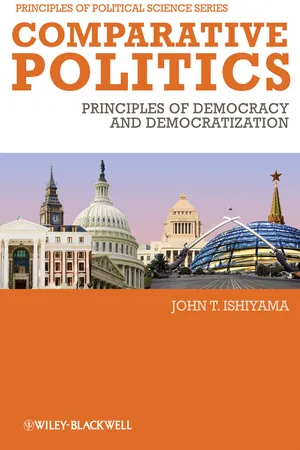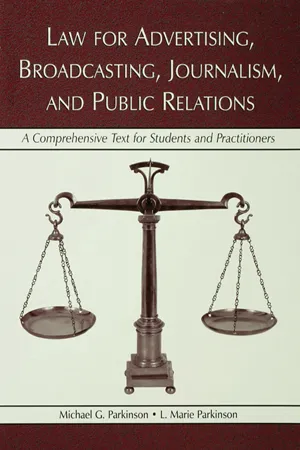Politics & International Relations
Federal Court System
The Federal Court System is the judicial branch of the United States government, consisting of the Supreme Court, Courts of Appeals, and District Courts. It has the authority to interpret and apply federal laws, resolve disputes between states, and hear cases involving the Constitution and federal laws. The system plays a crucial role in upholding the rule of law and ensuring the fair administration of justice at the federal level.
Written by Perlego with AI-assistance
Related key terms
6 Key excerpts on "Federal Court System"
- eBook - ePub
The Constitution of the United States of America
A Contextual Analysis
- Mark Tushnet(Author)
- 2008(Publication Date)
- Bloomsbury Publishing(Publisher)
4
The Constitutional Politics of the Judicial Branch
The US Supreme Court is at the top of a hierarchically organized, though somewhat complex, judicial system. There are two sub-systems of courts: one in the states and the other for the national government.1 The courts in the national judicial system are usually called the federal courts. State courts and the lower level federal courts have trial-level courts and appellate courts.2 Most American courts are generalist courts, with jurisdiction over claims of any sort.3 The US Supreme Court, on which this chapter focuses, has discretionary authority to hear appeals from decisions on matters of national law—statutory as well as constitutional—by the appellate courts in the national court system and by the highest state court authorized to decide the question of national law. Usually, but not always, that court is the state’s supreme court: in one notable case the US Supreme Court heard an appeal from a decision by the Police Court of the city of Louisville, Kentucky, which had imposed a small fine on the defendant, because under state law there were no appeals from such courts when small fines were imposed.4 - eBook - ePub
Federalism and the Courts in Africa
Design and Impact in Comparative Perspective
- Yonatan T. Fessha, Karl Kössler(Authors)
- 2020(Publication Date)
- Routledge(Publisher)
1 The duality of the federal system is also reflected in the manner that the judiciary is structured. Courts are structured at federal and state levels. State courts are required to resolve legal disputes based on state laws, while federal courts are expected to use federal laws to deal with disputes involving federal matters. The country has also adopted an unusual model of constitutional review in which the House of the Federation (HoF), the upper house of the federal Parliament and not the judiciary, is given the power to interpret the Constitution, including the exclusive power to resolve disputes between the two levels of government and declare a law unconstitutional.1 A ‘dual federal system,’ also referred to as ‘a layered-cake’ federation, is a system in which both national and state governments coexist as equals and exercise ‘mutually exclusive’ and ‘reciprocally limiting’ functional competences. The emphasis in a dual federal system is, therefore, on preventing one level of government’s encroachment into the competences of the other. A dual federal system is contrasted with a cooperative federal system, also known as the ‘marble-cake’ federation, which, assuming the impossibility of neatly diving powers between two levels of government, eschews the notion of exclusive competences and emphasizes the need for cooperation between the two levels of government in the exercise of a certain function. Arguably, in terms of the Constitution, Ethiopia’s federation is more of a dual federation despite its having some elements of cooperative federalism. Both levels of government have exclusive competences in relation to which they are authorized to exercise legislative and executive powers. The Ethiopian Constitution further requires the two levels of government to respect each other’s powers and functions. See also Art 50(8) of the Ethiopian Constitution.This chapter seeks to discuss the organization and structure of the Ethiopian judiciary, including the HoF, and examine their impact on the functioning of the federation. The question is whether the courts, both federal and state courts, and the HoF have managed to give ‘shape and texture’2 - eBook - ePub
Comparative Politics
Principles of Democracy and Democratization
- John T. Ishiyama(Author)
- 2011(Publication Date)
- Wiley-Blackwell(Publisher)
9 Comparative Judicial Politics and the Territorial Arrangement of the Political SystemAnother key set of institutional choices when fashioning together a political systems is: (1) the structure and the role of the judicial system and courts; and (2) the relationship between the central government and local governments. In this chapter we will explore how different judicial systems are structured, the role played by judicial independence and judicial activism, and the effects of courts on the development of democracy. The chapter then will turn to a discussion of the various ways in which the relations between the central government and the local governments can be structured, particularly via unitary systems, federalism, and confederal arrangements.Judicial SystemsAs C. Neal Tate (1992) has noted, the comparative study of courts by scholars has had a long tradition in political science. Although the role of courts in democracies was a favorite topic of the discipline in the earlier part of the twentieth century, the coming of the behavioral revolution pushed the study of courts to the sidelines. However, by the late 1960s, the behavioral study of the courts began again, and since then there has been a considerable amount of new work on the role of courts in democratization and democratic consolidation.To understand the role courts play in the democratic process, it is first necessary to have some idea of what one means by a “court.” Becker (1970, p. 13) defined a court asa man or body of men [sic ] …with power to decide a dispute, before whom the parties or advocates or their surrogates present the facts of a dispute and cite existent, expressed, primary normative principles (in statutes, constitutions, rules, previous cases) … and that they may so decide, and as an independent body.Shapiro (1981) contended that courts serve three primary functions in democracies – the resolution of conflict, social control, and the making of laws. By law-making - John R. Schmidhauser(Author)
- 2016(Publication Date)
- The University of North Carolina Press(Publisher)
CHAPTER I : The Origin of the Supreme Court’s Power as Arbiter in Federal-State RelationsANY FEDERAL SYSTEM requires an institution to determine conflicts of authority between the nation and the states comprising it. In the four most important modern federal states, Australia, Canada, West Germany, and the United States, such authority has been lodged in a judicial body. The highest judicial institution of the last, the Supreme Court of the United States, in many respects served as a prototype for application of the judicial arbiter principle in the federal systems of Australia, Canada, and West Germany. Within the United States itself, the influence of Supreme Court decisions upon the American federal system is generally recognized as determinative. An examination of the manner in which the Supreme Court fulfilled its responsibilities as arbiter of American federalism is the primary purpose of this study. Such an examination may contribute to greater understanding of the characteristics of American federalism and may also provide data for a broader study of comparative judicial institutions.How well suited is the Supreme Court of the United States for its role as umpire in federal-state relations? For an understanding of the Court’s present potentialities and limitations, analysis of its past performance is in order. Such analysis embraces investigation and interpretation of one hundred and sixty years of judicial arbitership. The task of interpretation, of necessity, raises the question of criteria. By what standards may the performance of the Supreme Court be measured? Past expectations perhaps modified by present necessities can throw light on this problem. The study of origins provides a logical starting point. What role did the framers of the Federal Constitution and the members of the ratifying conventions envisage for the Supreme Court?- eBook - ePub
Law for Advertising, Broadcasting, Journalism, and Public Relations
Law for Advertising, Broadcasting, Journalism, and Public Relations
- Michael G. Parkinson, L. Marie Parkinson(Authors)
- 2013(Publication Date)
- Routledge(Publisher)
In the United States there are two basically independent court systems: the national court system, usually referred to as the federal courts; and the individual state courts. Thus, at any one time there are 51 separate and distinct court systems operating within the United States. Each of these court systems has its own separate power basis or constitution, which describes its structure and authority.Federal CourtsThe U.S. Constitution provides for two types of courts in the national court system: the Article III courts, also known as “constitutional courts” and the Article I courts, also known as “legislative courts.” The Constitution creates Article III courts with the fol lowing language:The judicial Power of the United States shall be vested in one supreme Court, and in such inferior Courts as the Congress may from time to time ordain and establish. The Judges, both of the supreme and inferior Courts, shall hold their Offices during good Behavior, and shall, at stated Times, receive for their Services, a Compensation, which shall not be diminished during their Continuance in Office.15Article I courts are created in Article I, Section 8, which says: “The Congress shall have Power. . . . To constitute Tribunals inferior to the supreme Court.”16Federal judges are appointed by the president with the advice and consent of the Senate.17 Judges appointed under Article III hold their offices for life, during good behavior, and their compensation may not be reduced during their time in office. However, judges in Article I courts do not have similar protection. Therefore, magistrates appointed to serve in legislative courts serve terms with set limits and could conceivably have their compensation reduced or terminated at the whim of Congress.Article III CourtsThe national court system is a three-tiered, consolidated court system. At the lowest level, there are 94 trial courts, called courts of original jurisdiction, where all cases qualified to enter the “federal courts” are originally filed. The number and location of these courts is determined by Congress. The number of these district courts is increased from time to time, based on factors such as the population and the number of cases filed. All states have at least one federal district court. They are identified by the state or the geographic area within a state where they preside. For example, the federal trial court that meets in southern California is referred to as the U.S. District Court for the Southern District of California. In citations this is abbreviated “S.D. Cal.” - eBook - ePub
The Constitution of the United States of America
A Contextual Analysis
- Mark Tushnet(Author)
- 2015(Publication Date)
- Bloomsbury Publishing(Publisher)
Congress created lower-level courts in the First Judiciary Act, enacted in 1789. The jurisdiction of those courts has varied over the centuries, but the details of lower-court jurisdiction need not be explored here except when specific changes in that jurisdiction illuminate more general questions about how the national courts fit into the constitutional system as a whole. 2 Most states have intermediate appellate courts and a supreme court. The names of these courts vary. For example, New York’s trial courts are called ‘supreme courts’ and its highest court is the Court of Appeals. Massachusetts’s highest court is the Supreme Judicial Court. 3 There are some specialized courts in both sub-systems. Many states have specialized trial-level family courts, with appeals to the generalist appellate courts. Some state courts authorize only a specialized court to hear claims against the government. The national court system includes specialized trial-level courts for claims against the national government, a specialized court for tax matters, and a court of appeals with exclusive authority to decide patent cases; the latter court has jurisdiction over some other types of cases as well. 4 Thompson v City of Louisville 362 US 199 (1960). 5 As a result, there is no controversy in the United States over the practice of construing a national statute to avoid holding it unconstitutional, even if the construction is somewhat strained. There is somewhat more controversy over the practice of construing a national statute to avoid deciding a difficult constitutional question, although the practice is reasonably well settled. The concern is that this latter practice allows the courts to create a ‘shadow’ constitutional rule—one that influences statutory interpretation even though it might not be adopted as a constitutional interpretation were the question directly presented
Learn about this page
Index pages curate the most relevant extracts from our library of academic textbooks. They’ve been created using an in-house natural language model (NLM), each adding context and meaning to key research topics.





